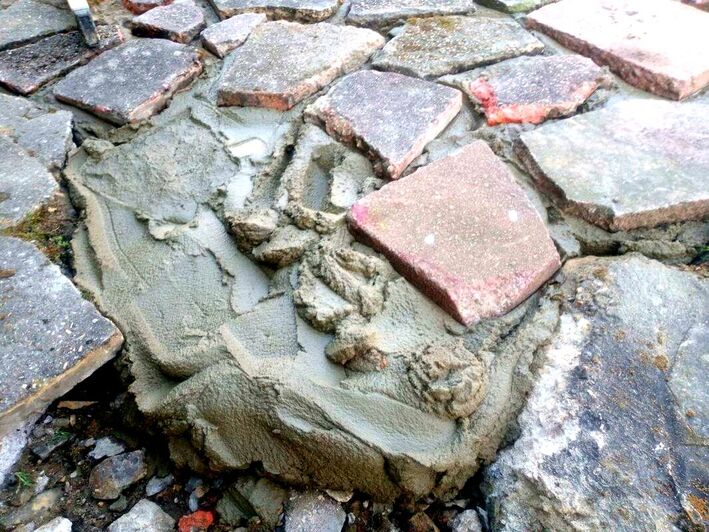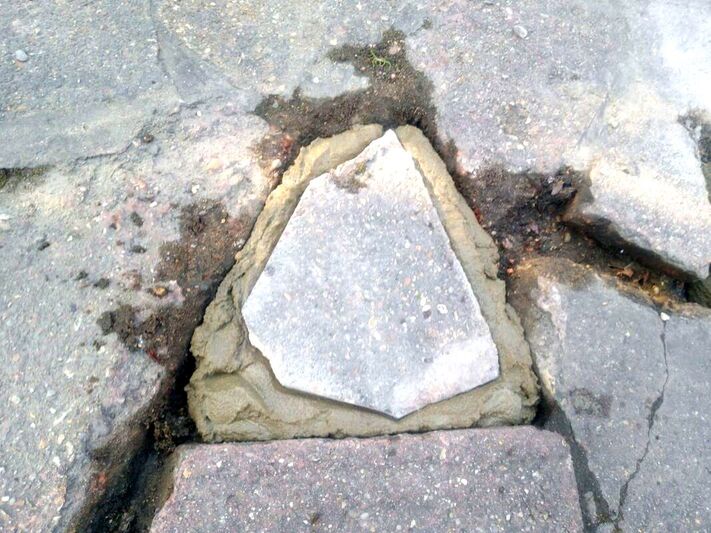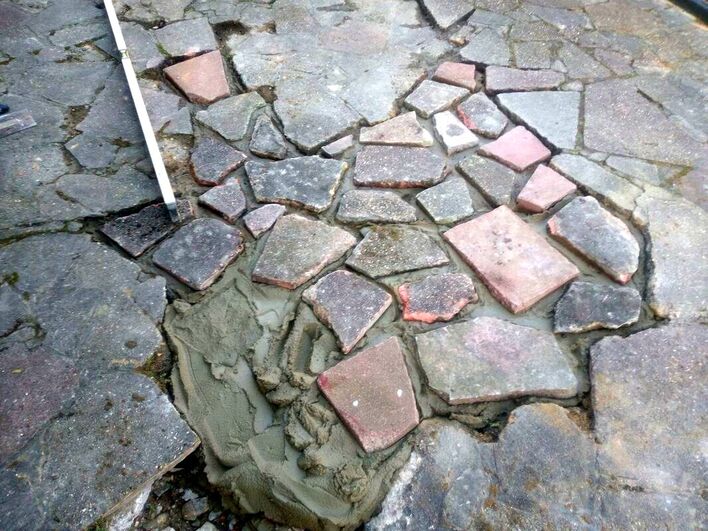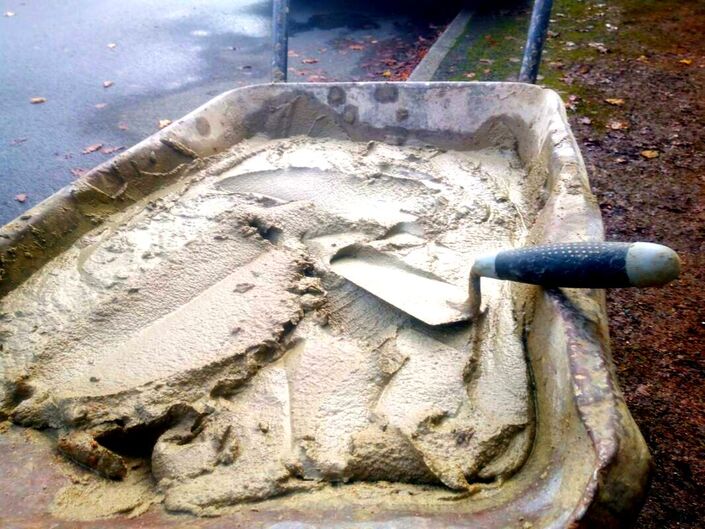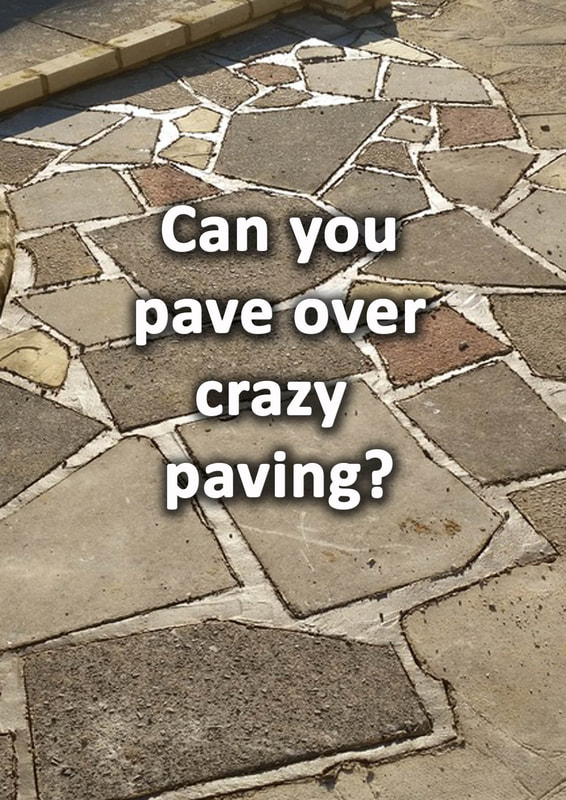|
This article contains affiliate links
Crazy paving is a method of paving which utilises random sized and broken paving units.
Such a paving method was common place before the development of modern paving suppliers. Many properties had crazy paving driveways and back patios built from disused and broken council paving. Today however, it is surprising just how much old crazy paving from this era remains. If built properly crazy paving can be very robust and last the test of time! Very often, pressure washing crazy paving will reap good results revealing a light and textured surface. Here I will explain how to repair crazy paving as well as answering some common crazy paving questions. Can you repair crazy paving?
You can certainly repair crazy paving if it is damaged or cracked. However, the general state of the whole surface should be able to tell you if it is worth repairing. If the majority of the surface is robust with no cracks it is probably worth repairing. If the whole surface is undulating and cracked it probably was not based or laid correctly. In such a case it is worth relaying the whole surface. However if you have a single crack or broken area it is best to repair the paving. What is the best base for crazy paving?
If your paving needs to take the weight of cars it is best to have a sub base of at least 150mm. This should be a compactable aggregate such as mot type 1 If however, you’re crazy paving will be taking the weight of people a compacted base of 100mm is ok. What is the best mortar mix for crazy paving?
The best mortar mix for crazy paving will be a sharp or coarse sand cement mortar mix. Mix up 1 part cement to 4 parts sand and mix with water with a splash of plasticiser added. Mix well until the mix has the consistency of a stiff brick laying mortar. Crazy paving can be very absorbent during hot and dry weather. This means you may have to add a little water in such conditions to keep it workable. How do you fill in holes in crazy paving?
Holes typically appear in crazy paving around the joints. This could be because the slab has separated from the mortar bed or grout has weathered out over time. If the paving is loose you will need to break out the old mortar and re-bed the slab before pointing. If the problem is just the pointing, cut out the old and point with a new mix. Can you put gravel in between crazy paving?
It is not recommended to put gravel between crazy paving. Gravel will allow water and frost to penetrate down into the mortar bed. This can lead to paving coming loose and the structural failure of the surface. Gravel joints will also lead to the accumulation of dust and dirt. This will lead to the establishment of weeds within the crazy paving. How do you point crazy paving?
Due to crazy paving’s high absorbency and large joint size pointing and grouting is different to conventional paving. Your pointing mortar should be a 1 part cement 4 parts plastering sand mix. Your mix should be a little bit wetter and workable than conventional mixes. This is because the thick concrete pavers can draw out moisture from the pointing quickly. This can lead to poor curing and an unsealed finish.
Mix your mortar until it is a very stiff mix with some elasticity. Slowly fill up the voids flush with a pointing trowel.
Take care not to let the mortar come into contact with the paving’s surface and stain it. With a rounded pointing trowel, smooth the mortar carefully to a neat finish. You may wish to take the extra time to implement weather shield or birds beak pointing. How to repair crazy paving step by stepStep 1.
Break or cut out any loose crazy paving or broken and degraded pointing. Step 2.
Break out any bedding mortar completely from where paving has been removed. Step 3.
Using a workable 1:4 cement and sharp sand mortar mix re-bed down any removed paving. Step 4.
Allow paving to set and cure for at least 24 hours. Step 5.
Clean out all pointing gaps so they are free of dust and debris. Step 6.
Mix up a 1:4 cement and plastering sand mortar mix with plasticiser for extra workability. Add water until it has the consistency of a stiff bricklaying mortar. Step 7.
Carefully fill the gaps in the paving with the jointing mix taking care not to stain the surface of the paving. Step 8.
When the pointing mortar is flush with the top of the paving work it to a smooth finish with a trowel. The best tool for this is a round ended pointing trowel. There should be no risk of rain the day you point and 16 hours of dry weather after completion. This will prevent the jointing being blown and the paving becoming stained. To help highlight the individual pavers score around the edge of the slaps with a nail like in the image below.
Thank you for reading our article on how to repair crazy paving. Below I have included some other articles you may also find useful and relevant.
'As an Amazon associate I earn from qualifying purchases'
0 Comments
Leave a Reply. |
The Author
|
Landscaping services across Buckinghamshire, Amersham, Aylesbury & High Wycombe
Hyde Heath, Amersham, Buckinghamshire |
|

